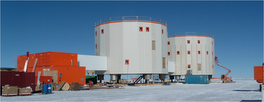Sunday Seismometer #11
Continuing our mini-series on electromagnetic seismometers (see the Galitzine and Press-Ewing posts), here is a seismometer you are unlikely to see anywhere else. The Peterschmitt was designed and built in Strasbourg in 1950, where it was in use until 1975.

This admittedly ugly looking beast is a prototype classical electromagnetic seismometer (you can see its coils on the near side, very similar to those on the Galitzine instrument) combined with a galvanometer. It has a natural period of 1s, and its amplification is provided by a resistance bridge. The most interesting feature of this instrument is its original inbuilt calibration system.
The design of this instrument is attributed to Elie Peterschmitt, who was recruited by Strasbourg in 1937, took charge of the Strasbourg historical seismological station as well as the stations of Besançon and Bagnères de Bigorre, and later helped develop the European-Mediterranean Seismological Center (EMSC).

















